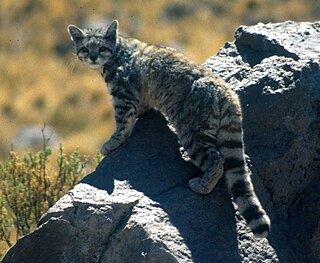- Extinct in the wild (EW): 2 species
- Critically endangered (CR): 545 species
- Endangered (EN): 848 species
- Vulnerable (VU): 670 species
- Near threatened (NT): 402 species
- Least concern (LC): 2,458 species
- Data deficient (DD): 1,567 species
- 6492 extant species have been evaluated
- 4925 of those are fully assessed [lower-alpha 1]
- 2860 are not threatened at present [lower-alpha 2]
- 2063 to 3630 are threatened [lower-alpha 3]
- 35 to 148 are extinct or extinct in the wild:
- 33 extinct (EX) species [lower-alpha 4]
- 2 extinct in the wild (EW)
- 113 possibly extinct [CR(PE)]
- 0 possibly extinct in the wild [CR(PEW)]
- ↑ excludes data deficient evaluations.
- ↑ NT and LC.
- ↑ Threatened comprises CR, EN and VU. Upper estimate additionally includes DD.
- ↑ Chart omits extinct (EX) species

As of September 2016, the International Union for Conservation of Nature (IUCN) lists 670 vulnerable amphibian species. [1] 10% of all evaluated amphibian species are listed as vulnerable. No subpopulations of amphibians have been evaluated by the IUCN.
Contents
- Salamanders
- Lungless salamanders
- Asiatic salamanders
- Mole salamanders
- Salamandrids
- Proteids
- Torrent salamanders
- Frogs
- Water frogs
- Robber frogs
- Shrub frogs
- Cryptic forest frogs
- True toads
- Fleshbelly frogs
- Glass frogs
- Batrachylids
- Litter frogs
- Screeching frogs
- Hemiphractids
- Poison dart frogs
- Mantellids
- Ceratobatrachids
- Fork-tongued frogs
- Narrow-mouthed frogs
- True frogs
- Australian water frogs
- Puddle frogs
- Hylids
- African reed frogs
- Other frog species
- Gymnophiona
- See also
- References
For a species to be assessed as vulnerable to extinction the best available evidence must meet quantitative criteria set by the IUCN designed to reflect "a high risk of extinction in the wild". Endangered and critically endangered species also meet the quantitative criteria of vulnerable species, and are listed separately. See: List of endangered amphibians, List of critically endangered amphibians. Vulnerable, endangered and critically endangered species are collectively referred to as threatened species by the IUCN.
Additionally 1567 amphibian species (24% of those evaluated) are listed as data deficient , meaning there is insufficient information for a full assessment of conservation status. As these species typically have small distributions and/or populations, they are intrinsically likely to be threatened, according to the IUCN. [2] While the category of data deficient indicates that no assessment of extinction risk has been made for the taxa, the IUCN notes that it may be appropriate to give them "the same degree of attention as threatened taxa, at least until their status can be assessed." [3]
This is a complete list of vulnerable amphibian species evaluated by the IUCN.



